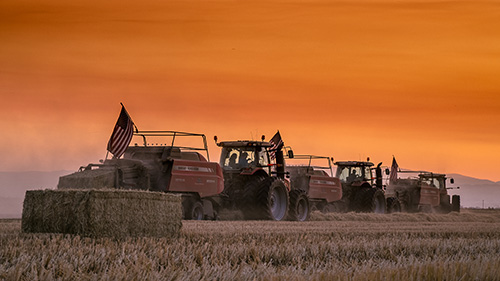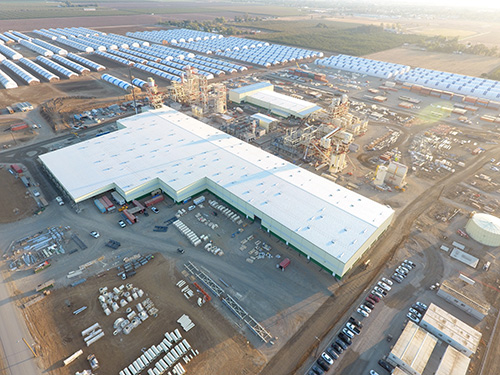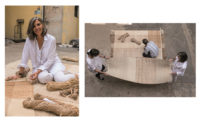Because medium density fiberboard (MDF) is widely used in building and product fabrication, making it sustainable could go a long way in helping reduce carbon emissions.
That’s one reason why a new type of MDF, made of rice straw, not wood, caused a stir at the recent Green Build International Conference and Expo, in Atlanta three months ago, and why it seems positioned to shake up MDF manufacturing in general.
Unlike traditional MDF, which at best can be sourced from sustainably managed trees, the rice-straw panels are made with agricultural waste, and create new income for California rice farmers on a byproduct they formerly paid to unload. The material (the stubborn stalks left over when rice crops are harvested) happens to produce a curly, high-quality fiber said to bond stronger than wood fiber.

The new material comes from the stalks left over after rice harvests, which are traditionally burned or flooded to speed their deterioration and clear fields. Photo © Courtesy of the manufacturer.
For these reasons and because the raw materials are sourced from farms within 25 miles of its new plant, CalPlant’s MDF earned a spot as one of Building Green’s Top 10 Products for 2020. The physical manufacturing plant is expected to produce 20 times fewer VOC emissions than a wood MDF manufacturer the same size, says CalPlant president and CEO Jerry Uhland.

The manufacturer’s processing plant in Willows, California, will begin production of rice-straw MDF this year. Photo © Courtesy of the manufacturer.
The eco-friendly location and material are intentional. Uhland, a former rice farmer, founded CalPlant to use the waste rather than accept California’s requirement to flood fields to get rid of it, a practice which triggers methane-gas emissions. The company spent months researching product applications for rice straw, then CalPlant patented the production process for the special MDF.
“So far, I haven’t seen anyone else pursuing this material for use as MDF,” says Uhland. A second location is planned for Arkansas, the nation’s largest rice-producing state with 1.4 million acres of rice fields.
This story was featured in Material World, Architectural Record’s products-focused newsletter. Subscribe today!







Post a comment to this article
Report Abusive Comment